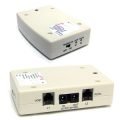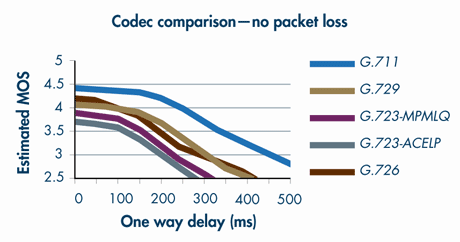This is from Fierce VOIP
The foundation of VoIP networks and VoIP technology is a set of protocols called H.323. These protocols were established by the Telecommunications Sector of the International Telecommunication Union (ITU-T). H.323 specifies components, protocols, and procedures for real-time point-to-point and multipoint multimedia communication over packet-based networks. It also sets interoperability guidelines for communication between H.323-enabled networks and other conferencing standards.
The H.323 protocol stack is designed to operate above the transport layer of the underlying network – in other words, on top of any packet-based network transport like Ethernet, TCP/UDP/IP, ATM, and Frame Relay.
Most H.323 networks – i.e. most VoIP phone systems (which are often referred to as IP PBX) – combine four components: terminals, gateways, gatekeepers, and multipoint control units (MCU). Terminals, gateways, and MCUs are collectively known as endpoints. Even though a terminal alone is sufficient to establish a VoIP network, the other components provide practical usefulness of the services.
• VoIP Terminal: A VoIP terminal, or a client, is an endpoint where H.323 data streams and signaling originate and terminate. It may be a multimedia PC with a H.323 compliant stack or a standalone device such as a USB (universal serial bus) IP telephone. A terminal must support audio communication, though video and data communication support is optional.
• VoIP Gateways: A VoIP gateway is necessary for voice communication to travel over H.323 packet-based VoIP networks and traditional circuit-switched networks. The VoIP gateway acts as an interface, translating signaling messages across the two networks while compressing and decompressing the voice.
• VoIP Gatekeeper: A gatekeeper is a very useful, but optional, component of a VoIP network. It provides routing and central management of all endpoints (terminals, gateways, and MCUs) in a given zone. The gatekeeper and the endpoints it administers form a management zone.
• Multipoint Control Unit (MCU): A multipoint control unit enables conferencing between three or more endpoints. An optional component of a VoIP network, MCU’s can be standalone devices or can be integrated into a terminal, gateway, or gatekeeper.
• CODEC: A CODEC is not a component. It is the compression technique used to minimize bandwith usage while preserving voice quality. Although many proprietary compression schemes exist, VoIP networks typically incorporate at least one of several standardized audio CODECs for the sake of interoperability.
Voice quality on VoIP networks is determined by four primary factors: the CODEC being used, as well as latency, jitter, and packet loss – all of which are influenced by overall network conditions.
Despite the promise of IP telephony, critical VoIP technology issues remain unsettled. These issues involve interoperability, standards, architecture, and overall quality-of-service. However, the market will gradually overcome these obstacles as new VoIP technology solutions emerge. Within the next several years we expect IP PBX systems to evolve, incorporating new VoIP technologies such as voice-over-WiFi office phones, dual-mode cellular VoIP phones, phones that display graphics and pictures, click-to-dial features, close integration with corporate databases, and other productivity tools.




